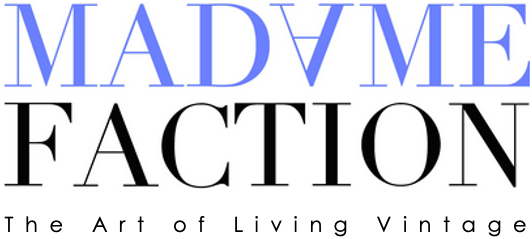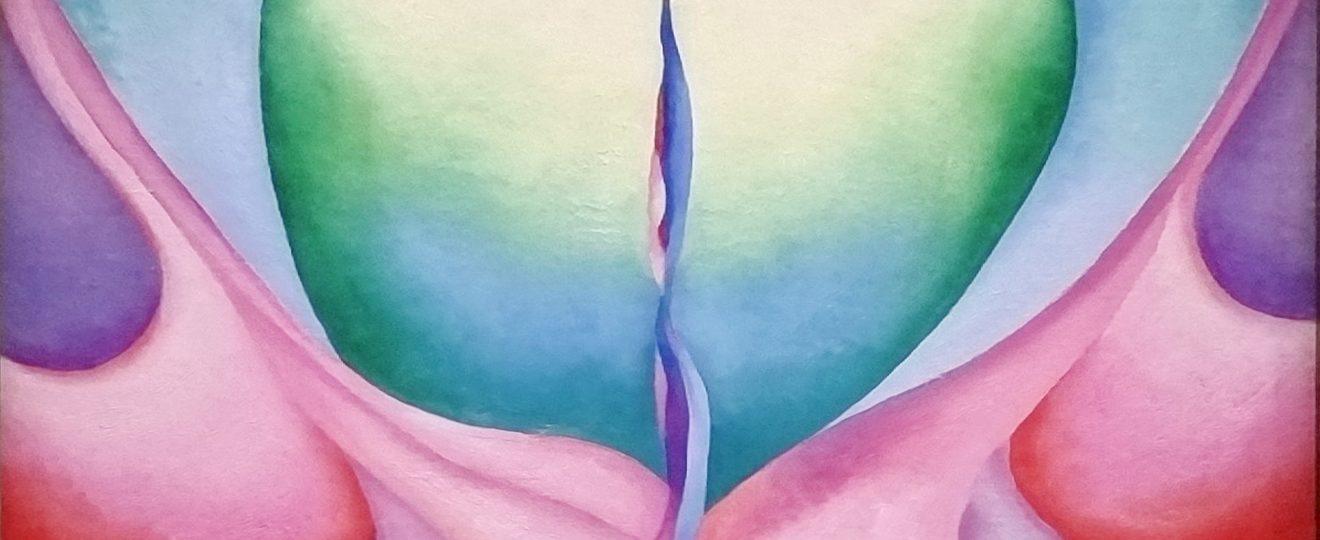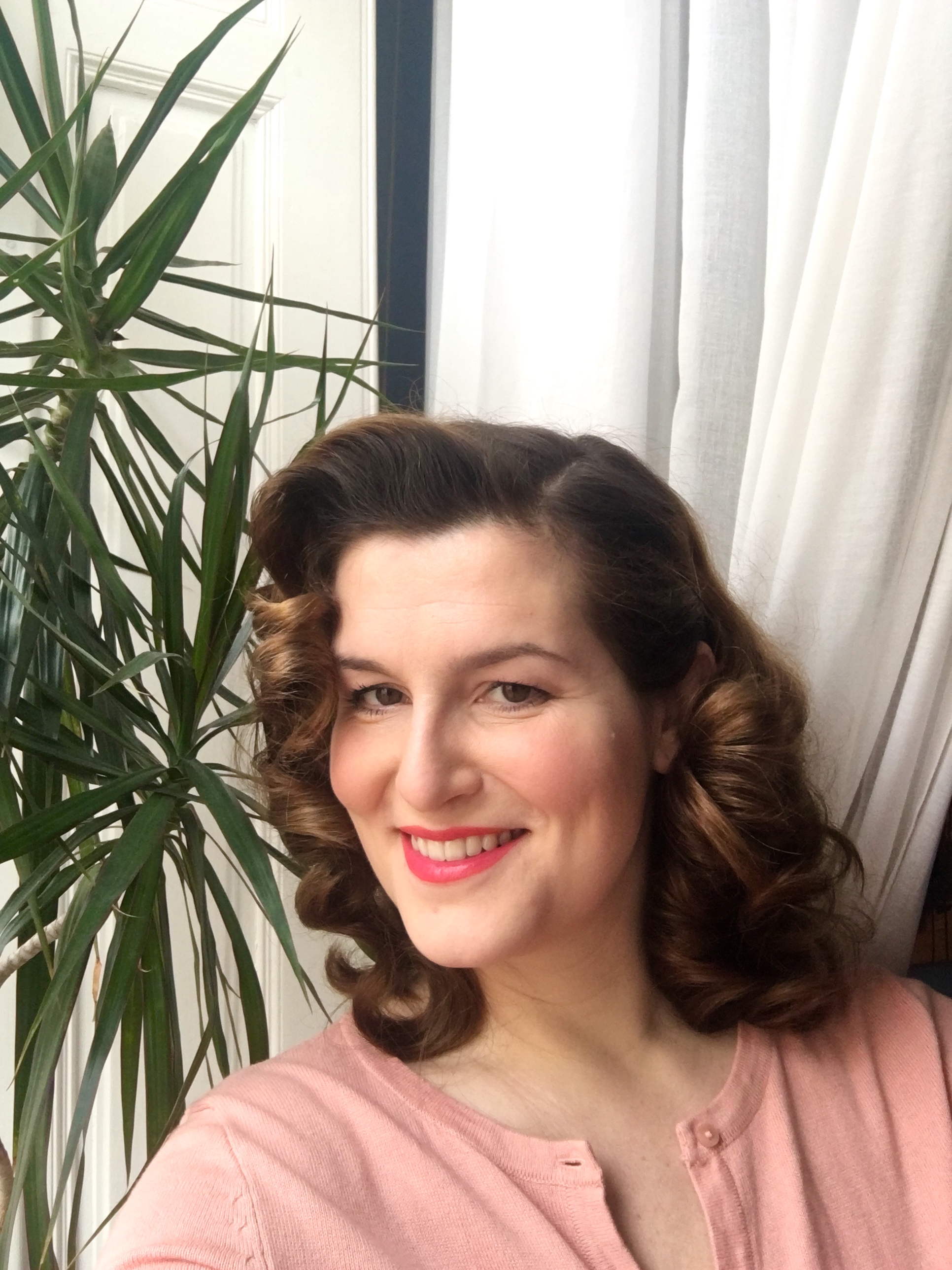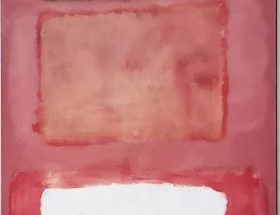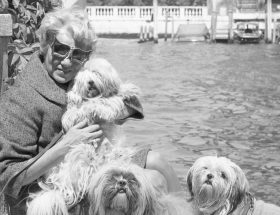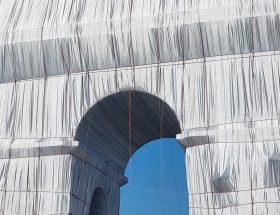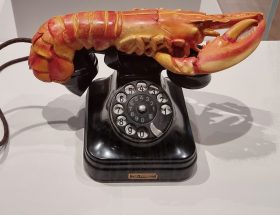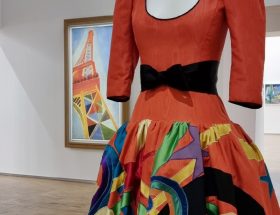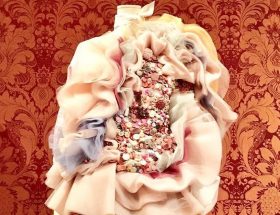We somehow all know Georgia O’Keeffe’s iconic paintings: giant FLOWERS, monumental LANDSCAPES, floating HEAVENS. But do we really know her art? I visited O’Keefe’s art exhibition almost by chance in the Centre Pompidou and thought before: I know her things – but one should have seen them in the original.
And then I had the same experience as with the Arc de Triomphe recently covered by Christo and Jeanne-Claude: Suddenly I stood in front of Georgia O’Keeffe’s works and was captivated.
Between EMANCIPATION and MEDITATION
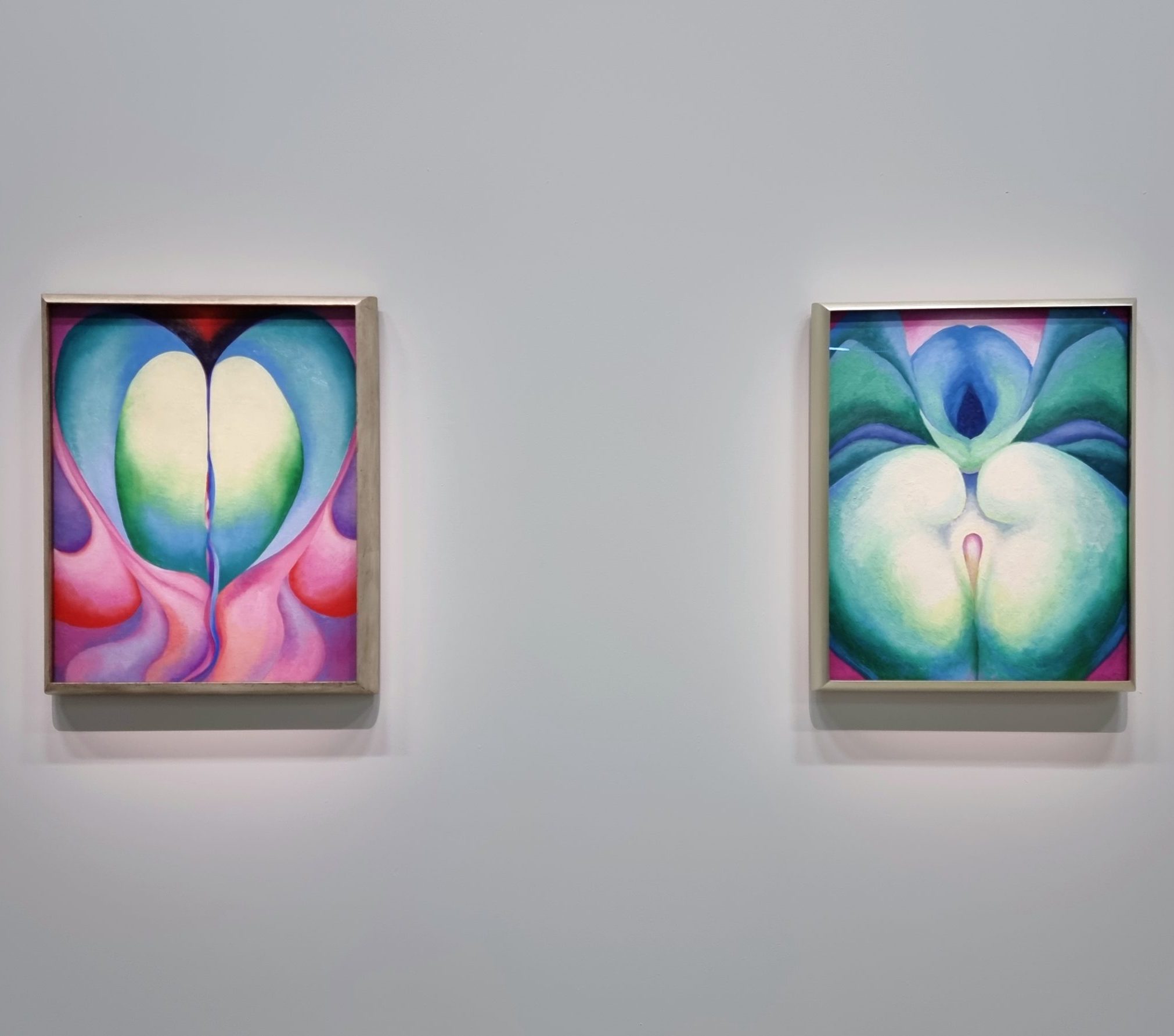
O’Keeffe’s paintings emanate a meditative calm and a peculiar matter-of-factness: The flower paintings surprise not only because of their clear style but also because of their ambivalent eroticism.
Whether one is familiar with Georgia O’Keeffe’s BIOGRAPHY or not, her art radiates a great self-confidence and an intense sense of her surroundings – with a very special clarity of color and form. Her (almost) provocative emancipation & obvious love of the American landscape grab you immediately.
An emancipated GIRL
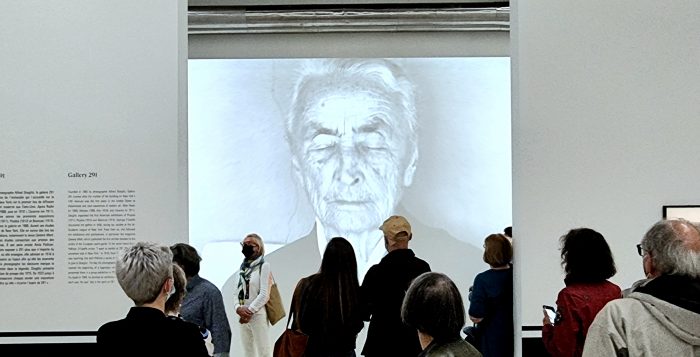
O’Keeffe’s start in life by no means augurs a career as an artist: in 1887, she is born into a large family of farmers in Wisconsin. Although she has six siblings, she also has a very strong-willed, emancipated mother who ensures that all her daughters receive a good education and can thus live financially independently. Anything but a matter of course around the turn of the century.
Georgia O’Keeffe’s art was thus created at a time when women were more likely to be quietly relegated to house & home than to be bustling in the New York art scene, and only a few female artists made it into society’s collective consciousness. O’Keeffe designed many of her well-known works primarily between 1915 and 1935 – and she did so in New York, in Texas, on Lake George, or in New Mexico. It is precisely this period that suggests the European avant-garde in her artistic proximity.
A cheeky start in NEW YORK
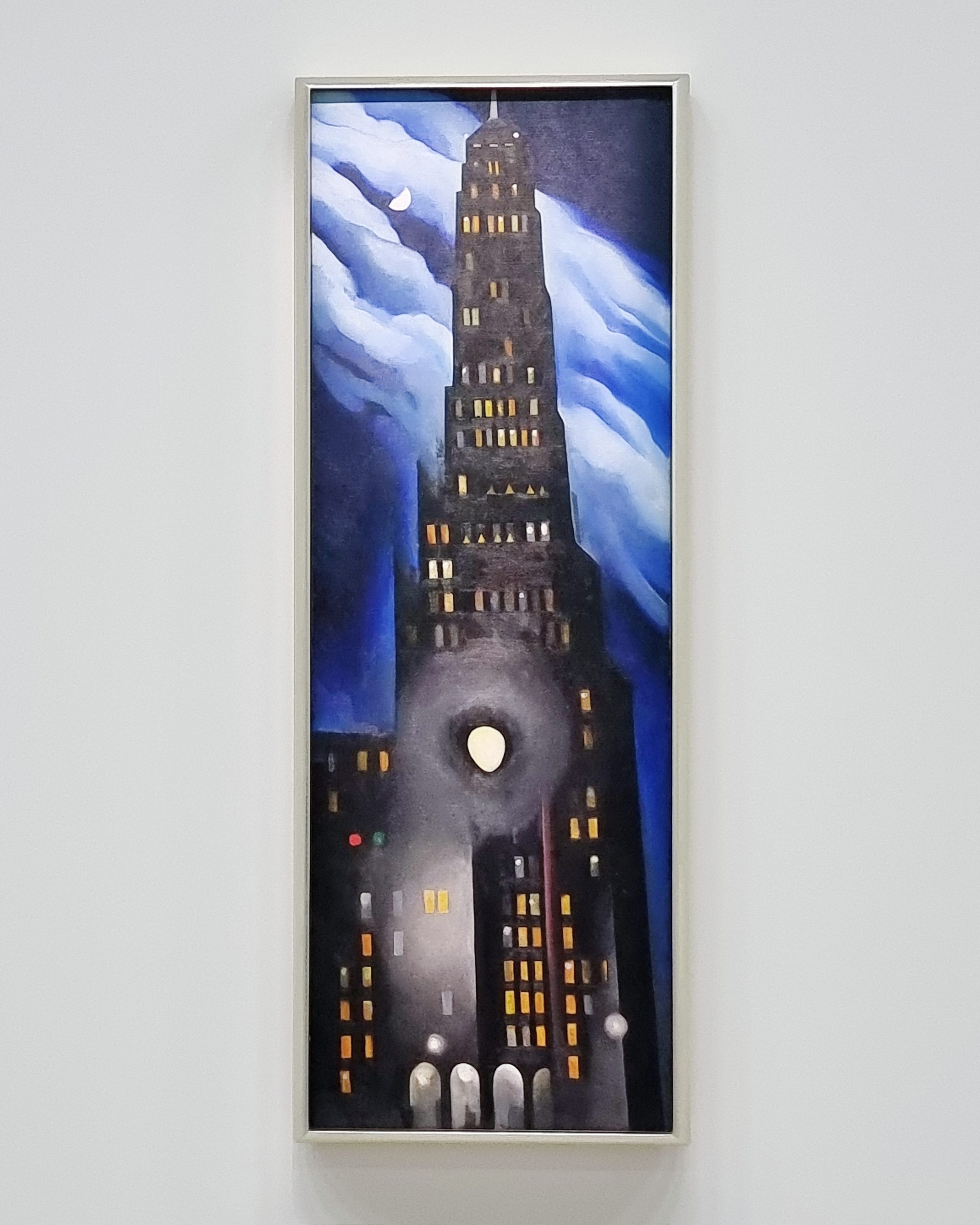
In fact, Georgia O’Keeffe came into contact with AVANTGARDE in New York when she became the art and life partner of Alfred Stieglitz from 1916. The two first got to know each other through O’Keeffe’s prints. Stieglitz received them from a friend of O’Keeffe’s and immediately exhibited them in his gallery – without knowing or asking the artist.
Stieglitz & the GALLERY 291
In addition to his successful career as a photographer, Stieglitz was also an early connoisseur and promoter of modern art in the USA. In addition to numerous projects, publications and initiatives, he founded Gallery 291 together with Edward Steichen in 1905, named after its glamorous address: 291 Fifth Avenue. And it was precisely in this gallery that the young Georgia showed up one day to confront Stieglitz about the unauthorized exhibition of her paintings. The rest is history.
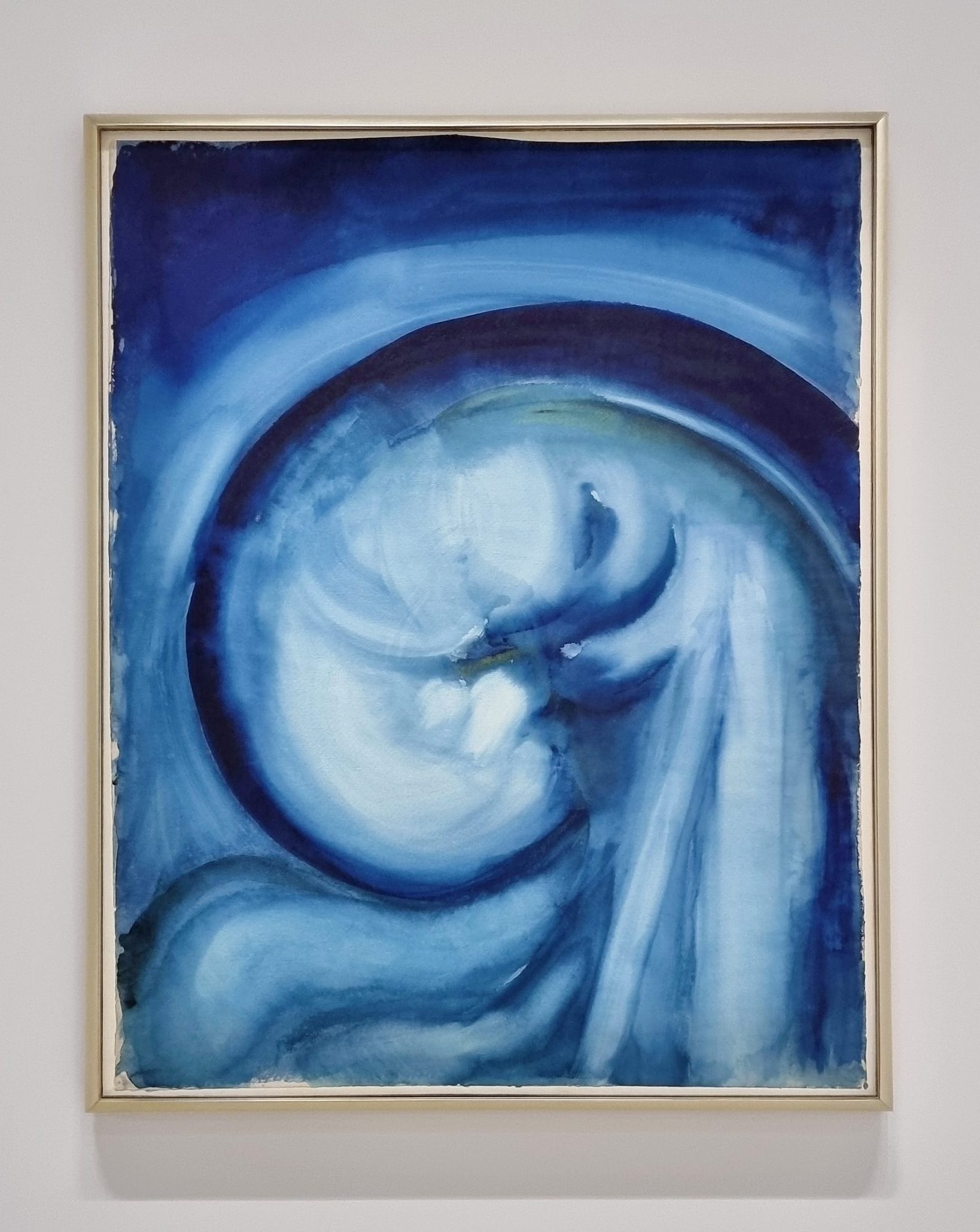
(Un)Impressed by the AVANTGARDE
O’Keeffe comes through Stieglitz and his network in contact with the European Avantgarde, sees the works and ideas of a Picasso, Kandinsky, Matisse, Rodin and others. She is well aware of the scandalized but also unstoppable development of painting towards ABSTRACTION. At the same time, O’Keeffe seems to be relatively unimpressed by it, as she pursues her very own color and formal POETRY, including a partial abstraction, very early on.
Painter & Model: An unusual COMBINATION
In 1924, Georgia O’Keeffe married Alfred Stieglitz and entered into not only a marital but also a professional, highly inspiring life partnership with him. Even though he is already very successful at this time, O’Keeffe cannot be assumed to be only his assistant and model. Although he photographs her (over 300 times!), he very often depicts her with her own works and thus makes her art known. Often she can be seen naked in these photographs, which causes a huge outcry. A scandal that O’Keeffe, as she tells later, hardly understands.
These photographs make her famous in one fell swoop. Showing herself and staging herself in this way not only causes outrage and conversation, it also boosts her career. It also shows us her tremendous self-confidence as a woman and an artist.
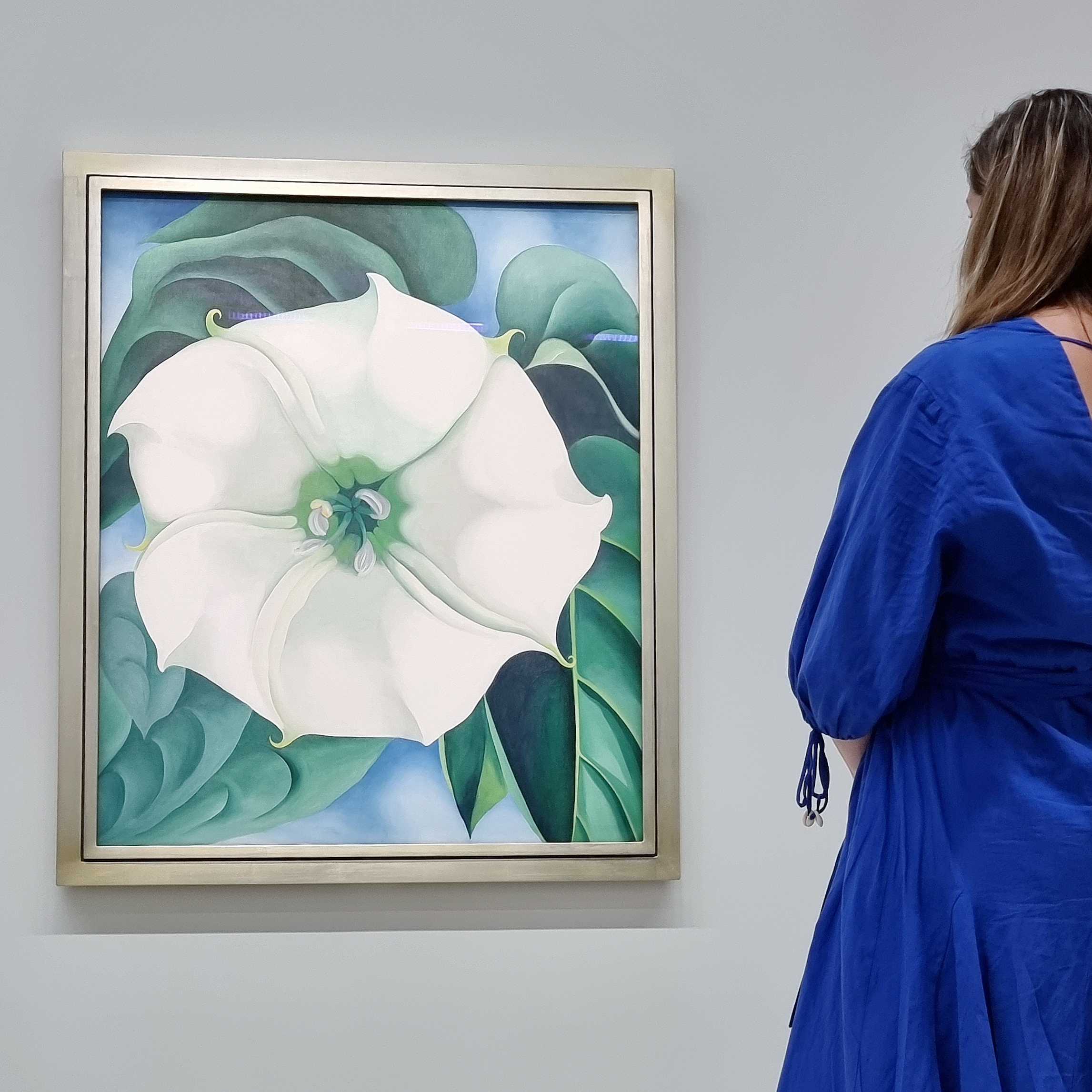
GIANT & EROTIC: O'Keeffe's flower paintings
In those years she begins with her famous flower paintings: Paintings that show blossoms in oversized forms. However, these paintings also breathe an almost intrusive eroticism: those forms that depict flowers can also be read as female genitals.
The SENSUALITY of EMANCIPATION
Let’s keep this in mind: We are dealing here with a young woman who not only poses nude with her pictures during the 20s, but also has the courage to depict female genitalia. Her works are neither vulgar nor crude. On the contrary, the ingredients of her success are the ambivalent clarity and supreme elegance of her style.
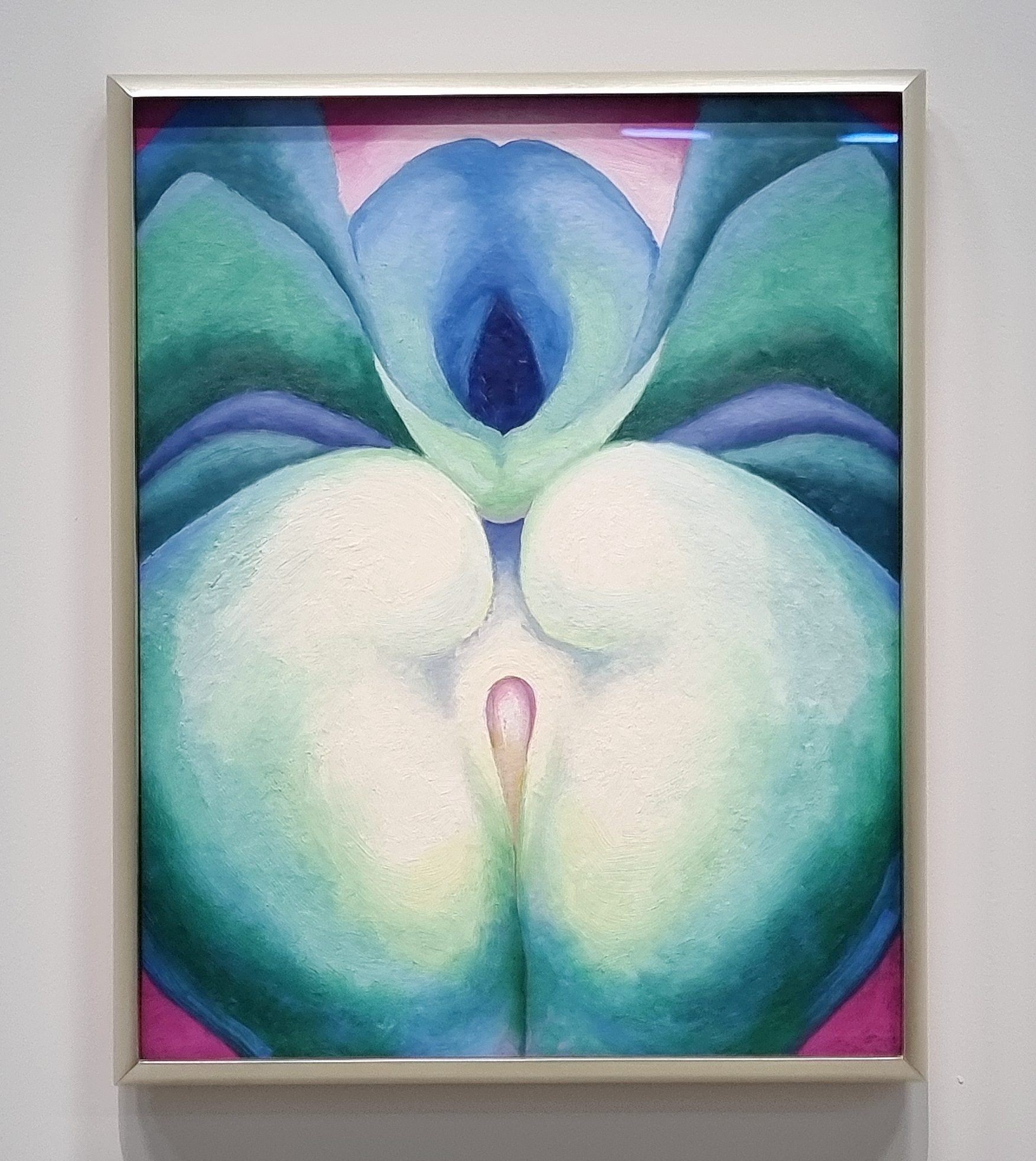
Georgia O’Keeffe’s EMANCIPATION has a very sensual touch. And is further flanked by her unseen courage and a seeming indifference. With the help of Stieglitz’s gallery, O’Keeffe receives for her paintings within a very short time the highest prizes ever received by a living American artist to date. And thus shows: It’s not just about staging or partnership equality – it’s about artistic and financial success.
Two PASSIONS
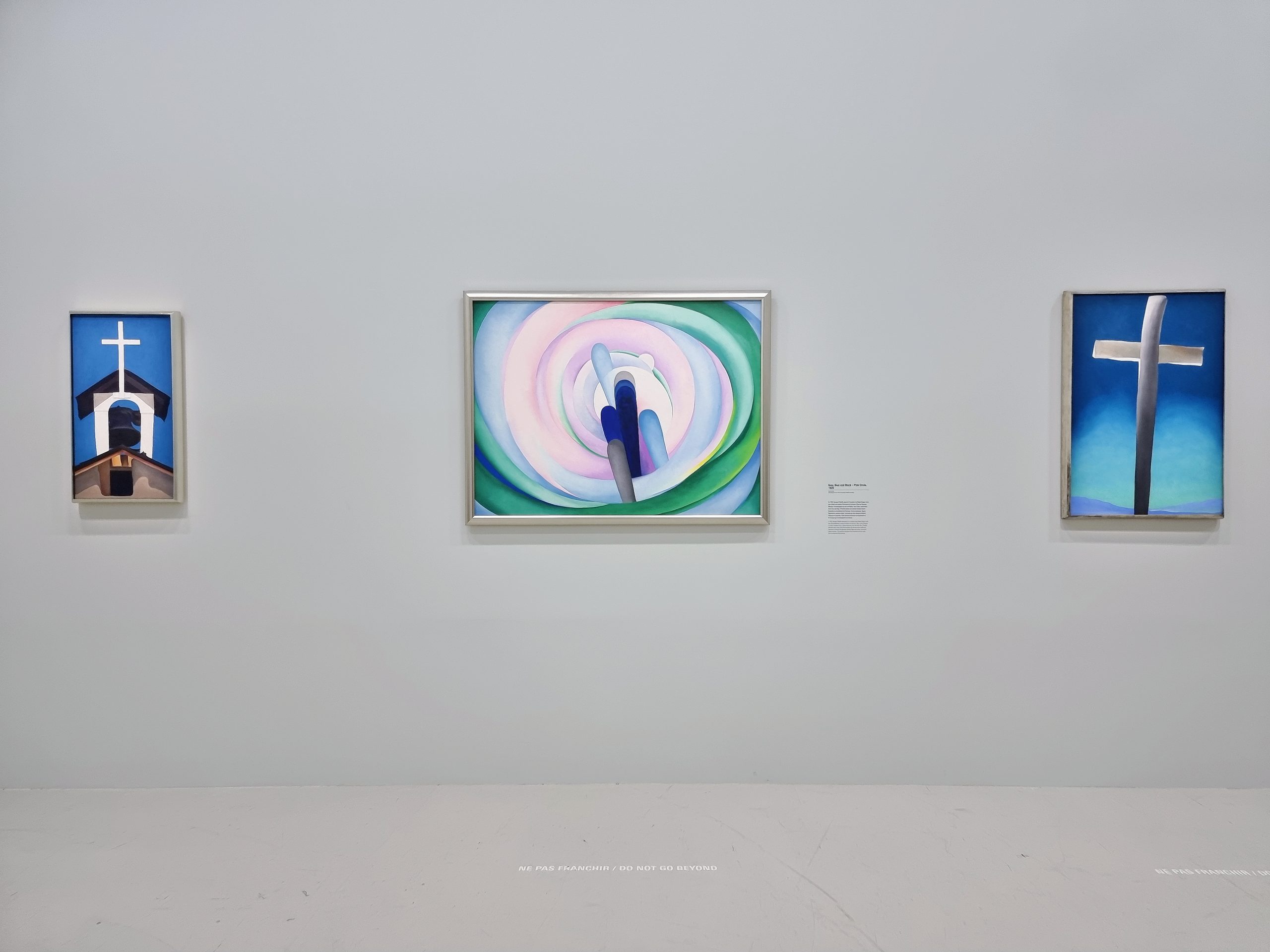
When Stieglitz finds a new partner in photographer Dorothy Norman, Georgia O’Keeffe leaves him with a heavy heart. However, she immediately sets off west with longing and lays the foundation for her future art in New Mexico. Soon she buys the “Ghost Ranch” there, an abandoned hacienda, and creates her own world in which she can live and work as she needs to. This is how she reports herself:
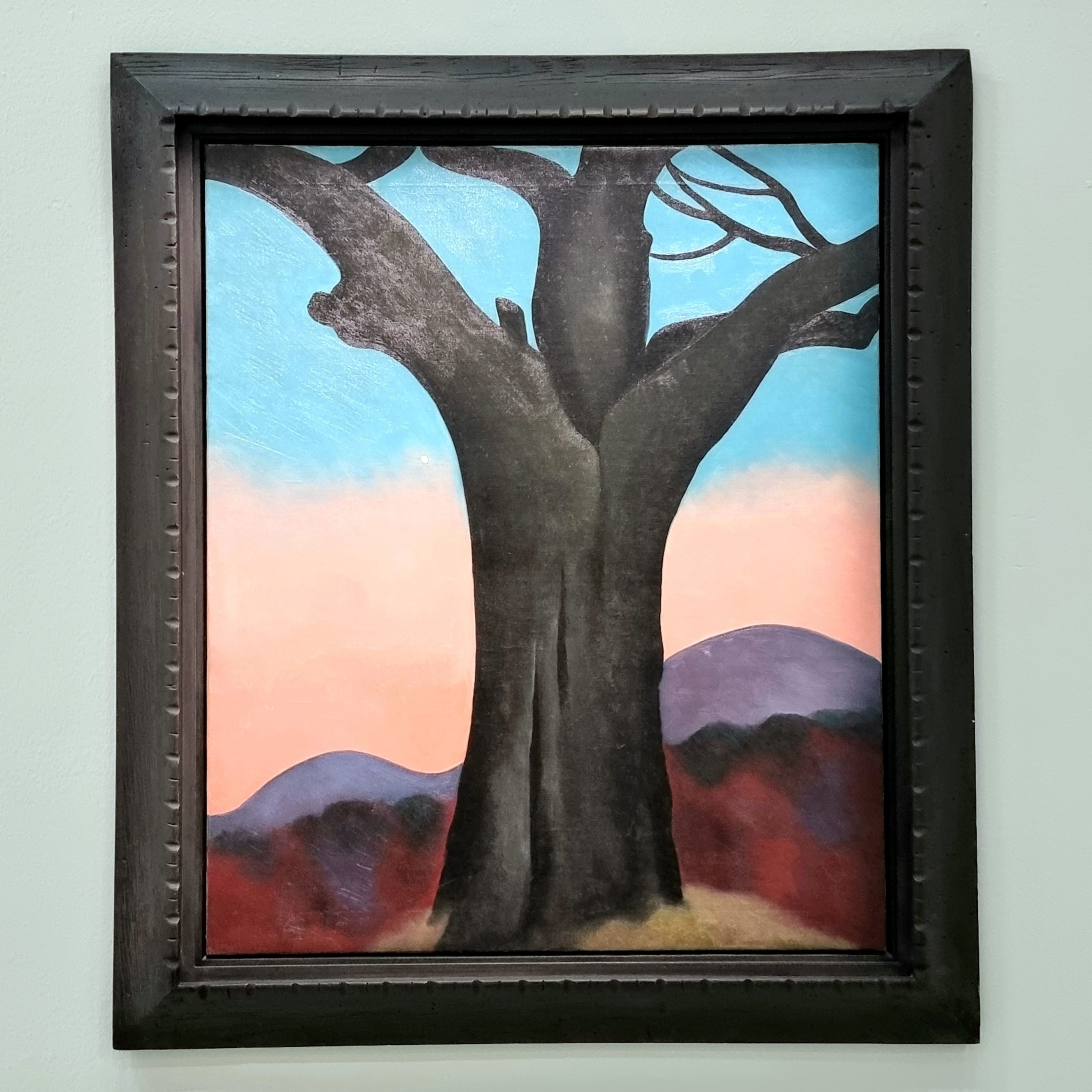
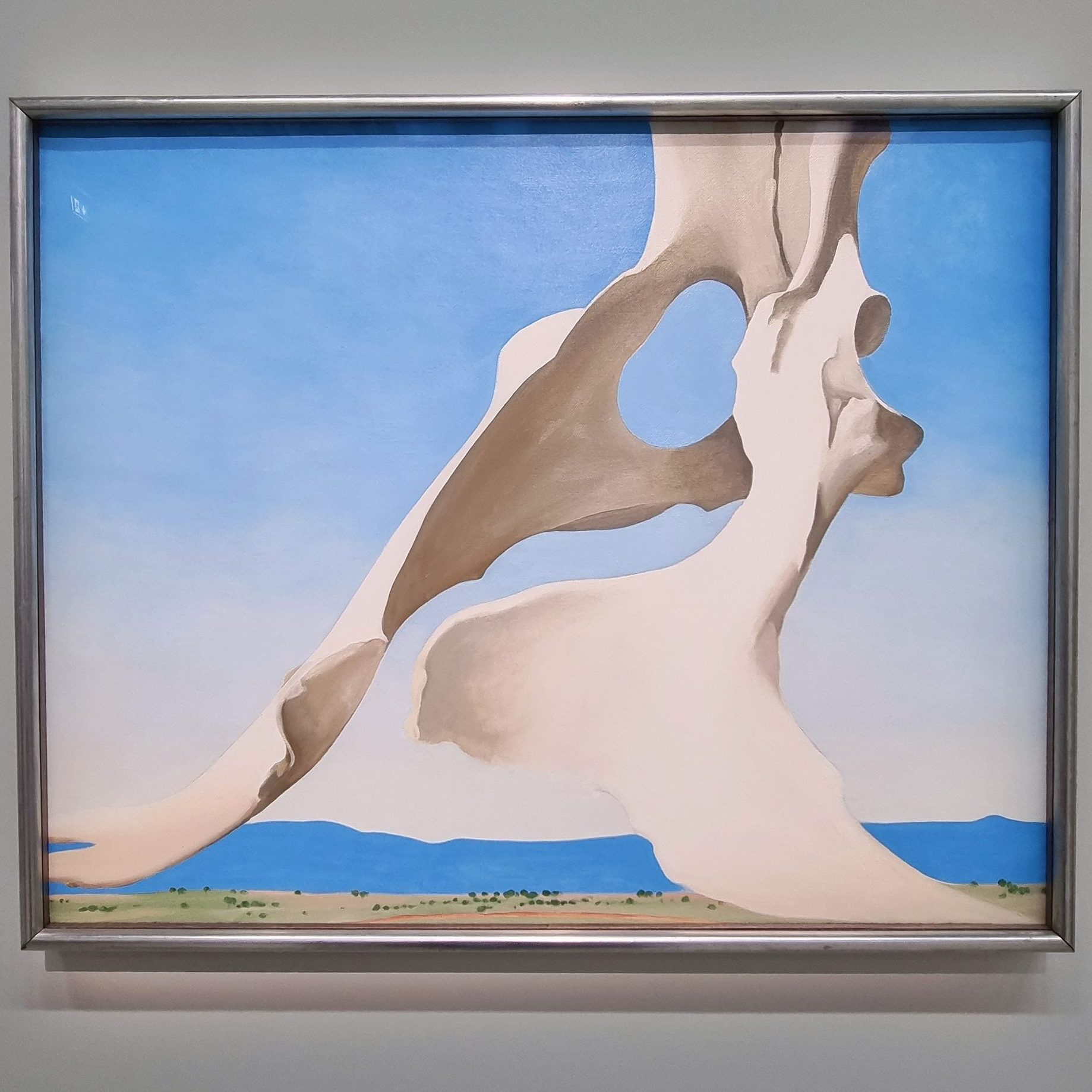
In those years she paints numerous bone paintings and creates her iconic landscapes. Furthermore, reduced forms, clear colors and a ghostly calm atmosphere dominate her style. Of course, one can make attempts here to draw motivic parallels to Surrealists such as Dalí, Magritte or Ernst (who, incidentally, will later paint his iconic landscapes in Arizona) or even to Frida Kahlo’s painting.
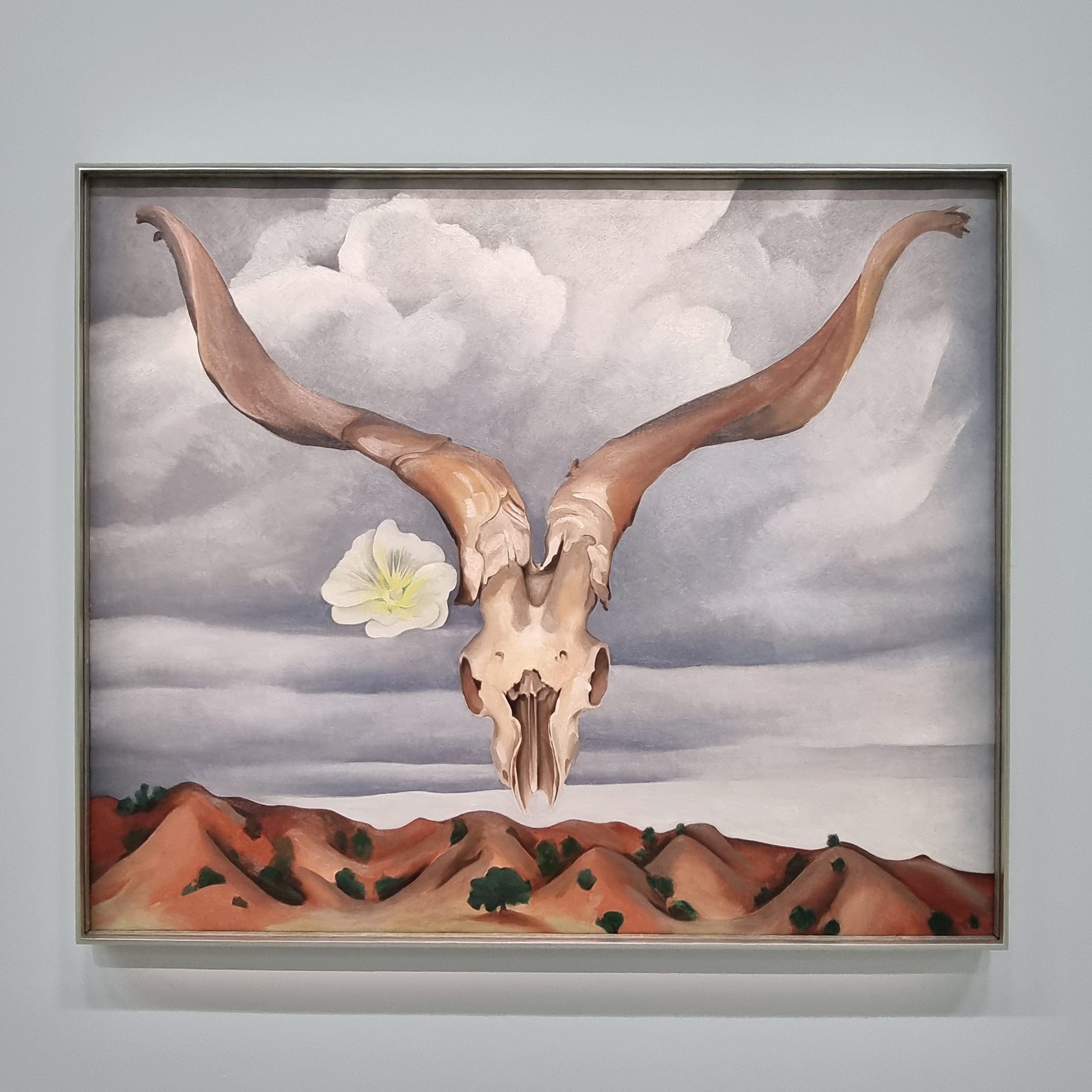
O’KEEFFE – the ONE and ONLY
However, such comparisons feel superfluous, as O’Keeffe’s images breathe a clear ATMOSPHERE all their own. Georgia O’Keeffe is dedicated to the American land like no other and no other before. No comparisons are needed to describe her art. No (other) aesthetic or artistic concepts of modern art are needed to approach her work. It stands for itself: Emancipated, sensual and full of clarity.
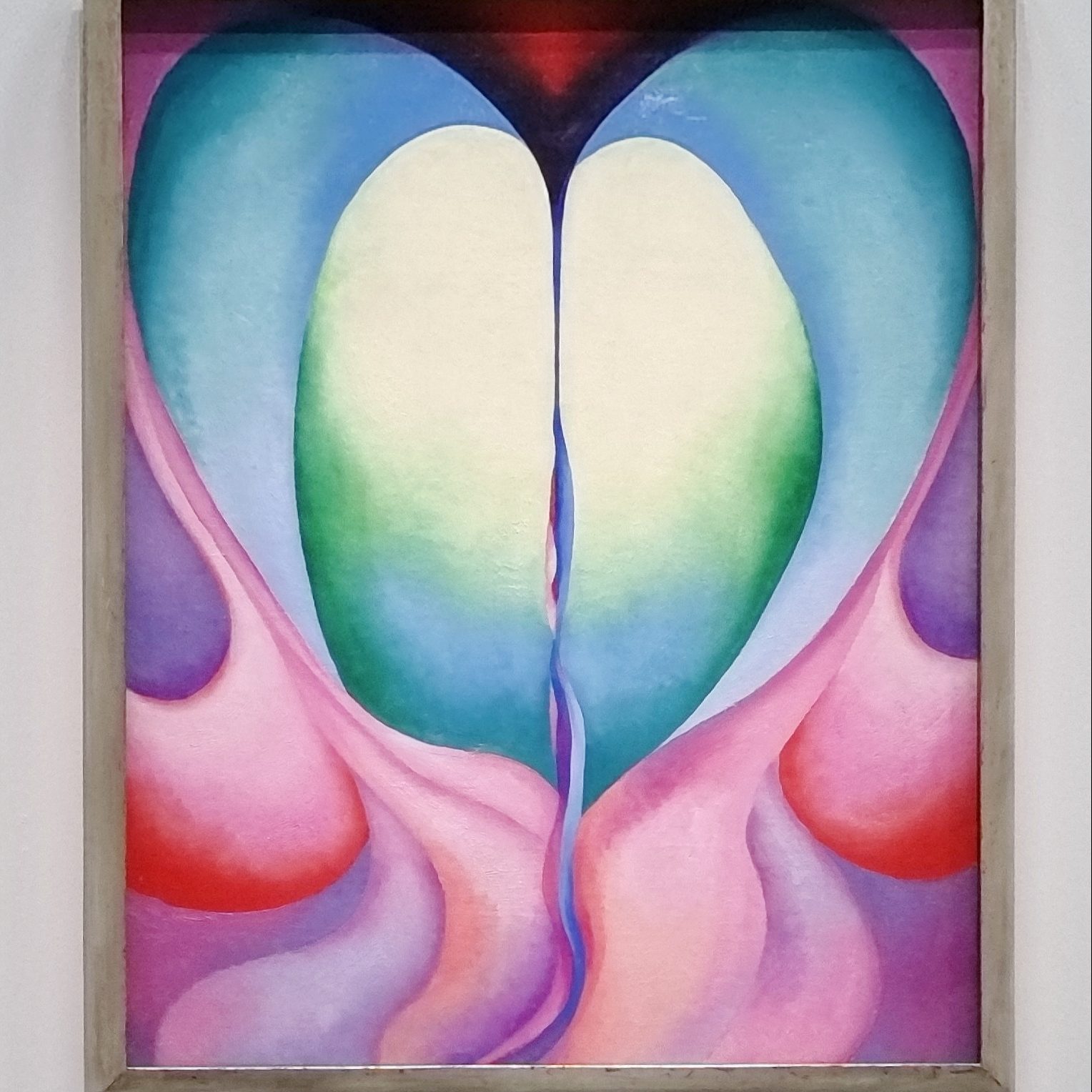
A special FOCUS
O’Keeffe’s story is worthy of detailed consideration for the vision of herself and her life. Her art, moreover, especially deserves to be viewed in the original. Her works are on display at the Centre George Pompidou in Paris until December 6. The exhibition then moves to Basel and can be seen at the Fondation Beyeler from January 23, 2022.
